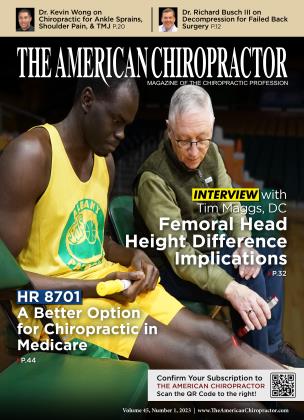Erectile dysfunction (ED) is becoming a common problem for men of all ages, but it should not have to be part of the normal aging process. In 2012, it was estimated that 30 million men in the U.S. were dealing with this problem.1 Market research conducted by Opinium Research in 2020 surveying 2,006 men in the United States found that three in five men (59%) from ages 18 to 55+ years old have suffered from ED.
ED is complicated, and many physical, biochemical, and emotional factors play into normal sexual function. There is a known bidirectional relationship between neuropsychiatric conditions, such as depression, and difficulties with starting and maintaining an erection. Whatever the cause(s) may be, there is a lack of blood flow and retention of blood to the penis.
The standard of care for nonsurgical treatment of ED is oral phosphodiesterase-5 (PDE5) inhibitors like sildenafil (Viagra) and tadalafil (Cialis), unless contraindicated, as in patients with high cardiovascular risk. These oral drugs have typical side effects that include headaches, flushing dyspepsia, and nasal congestion, as well other less common sides that include visual abnormalities, back pain, myalgia, and erections lasting longer than four hours.
Current alternative treatments available include administering extracorporeal shockwave therapy and platelet-rich plasma (PRP) injections along the corpus cavernosum at the ten and two o’clock positions and at the glans penis, which have proven to show satisfactory treatment outcomes. These treatments are very costly to the provider and the patient and come with their own possible side effects of pain, swelling, bruising, and nerve damage from the injections. These treatments also do not address the neuropsychiatric component of ED.
When an ED patient comes to the chiropractic physician’s office, the provider is currently limited on valid treatment options that directly affect ED outcomes because they are either outside the scope or principles of the chiropractic office or outside the budget of a standard chiropractic office to implement.
Could cold laser therapy be used as a noninvasive, drug-free, and cost-effective approach to treating ED?
Cold laser therapy, also known as low-level laser therapy (LLLT) or the new industry-accepted term photobiomodulation therapy (PBMT), has been around for over 50 years, has thousands of peer-reviewed research articles establishing its effectiveness for numerous conditions, and has an extensive safety record. PBMT possibly could be the ideal modality for the chiropractic physician for treating ED and sexual dysfunction by addressing the neuropsychiatric component through transcranial photobiomodulation (t-PBM) and through the direct PBMT stimulation to the penis and testes and their blood supply.
Although PBMT is not currently FDA approved for treatment of ED or any sexual dysfunction in the U.S., numerous studies in literature worldwide have been conducted applying PMBT directly to the penis and testes and through t-PBM. One study of 44 ED participants from the department of urologic surgery in Israel suggests applying PBMT with nonpulsed 808nm laser energy along the corpus cavernosum for 20 minutes two times a week for six to eight sessions, suggesting ED improvements that lasted for an average of six months with no adverse effects.2
In the case of low sperm count and low libido, a foreign clinical trial was conducted by applying PBMT with nonpulsed 635nm and superpulsed 904nm laser energy to the testes of men with oligozoospermia for four minutes two times a week for 10 sessions, which suggested a significant improvement in sperm motility and number, along with increased libido.3 In a double-blind clinical trial in the U.S. for sexual dysfunction, t-PBM was applied with 823nm light energy to the forehead bilaterally, per EEG placement map, directed to the F3 and F4 sites for 20 to 30 minutes two times a week for 10 sessions, which suggested a significant improvement in the subjects receiving the t-PBM versus those receiving the sham treatment.4
PBMT could be used as a multifaceted approach to address the underlying issues in each individual patient. Treatment could consist of the systemic blood supply through the median cubital vein; the direct blood supply from the internal pudendal artery; the affected tissue of the testes, corpus cavernosum, and glans penis; and by indirectly treating the neuropsychiatric component through t-PBM. Due to the immense safety of PBMT, this treatment could theoretically be conducted at the convenience and comfort of the patient within their own home, with instruction from the provider. The International Index of Erectile Function (IIEF) questionnaire
and Erection Hardness Score (EHS) are readily available to the provider to be used as outcome measurements.
Preliminary data is very promising, but more research is needed to determine if cold laser therapy or photobiomodulation therapy will become the new nondrug, nonsurgical, first-line, cost-effective treatment of choice for erectile dysfunction (ED).
Dr. Novak has performed and overseen over 250,000 photobiomodulation therapy sessions in the last 10 years. He is the chief scientific officer (CSO) for a photobiomodulation therapy device manufacturing firm, which has developed FDA cleared devices, such as super pulsed laser therapy technologies.
References
1. Nunes KP, Labazi H, Webb RC. New insights into hypertension-associated erectile dysfunction. Current Opinion in Nephrology and Hypertension. 2012;21(2):163-170.
2. Y. Yacobi M.D., A. Sidi M.D., Department of Urologic Surgery, The Wolfson Mediccd Center, Holon, Israel.
3. Hasan P, Rijadi SA, Purnomo S, Kainama H. The possible application of low reactive-level laser therapy (LLLT) in the treatment of male infertility: A preliminary report. Laser Ther. 1989; 1 (l):49-50.
4. CassanoP, DordingC, Thomas G, Foster S, Yeung A, UchidaM, Hamblin MR, Bui E, FavaM, Mischoulon D, et al. Effects of transcranial photobiomodulation with near-infrared light on sexual dysfunction. Lasers Surg. Med. 2019,5:127-135.
 View Full Issue
View Full Issue






